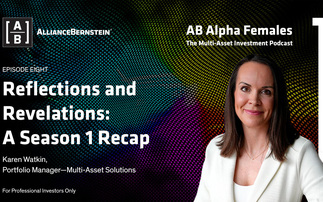Partner Insight: As yields have compressed and forward-looking return expectations fall, multi-asset managers have sought alternatives to traditional asset classes to find new sources of income and boost returns
"The opportunity set within the alternatives sector is truly global and spans a diverse range of often quite specialised sectors. Today this includes private equity, infrastructure, hedge funds, private credit, insurance-linked securities and pharmaceutical royalties to name a few. Yet it wasn't that long ago that these types of alternative investments were the exclusive domain of institutional or specialist investors only," notes Michael Howard, Head of Alternative Investments at Prudential Portfolio Management Group (PPMG). "Newer alternative assets are often idiosyncratic in nature and uncorrelated with both traditional asset classes. Therefore, it is no surprise that they are being accessed much more widely than before."
Alternative substitute
Private equity is one area Howard and his team has invested in significantly over the past decade. The growth of this asset class has been driven by a number of factors. He explains: "More than 6,000 companies were listed in the US in 2000; today that figure is less than 4,000. The reason for that shrinking figure is that IPOs have dried up and when companies are choosing to list they are coming to the market with a much larger capitalisation than average." Effectively the growth period and when higher returns are on offer is all happening at a much earlier stage and predominantly via private capital.
"You can see that quite clearly when you compare the investment return multiples since IPO for Amazon versus Google and Facebook; the latter two were much lower as the growth phase had been enjoyed by private equity groups."
While alternative assets are useful in providing sources of uncorrelated portfolio returns, in other cases, like private equity for example, returns may have a higher correlation to public markets.
Though private equity investments will be investing in different companies with varied outlooks, they are essentially affected by the same thing as publicly listed companies: the economic cycle. Of course, what you do get by investing in private equity is an enhanced return and that is a good reason to consider it over other equity investments in a multi-asset portfolio. Crucially, these enhanced returns are delivered net of fees.
Click here to read the full article in an exclusive Multi-Asset magazine which reveals how pharmaceutical royalists and insurance-linked securities are taking over from traditional alternatives such as property as investors seek higher returns.













